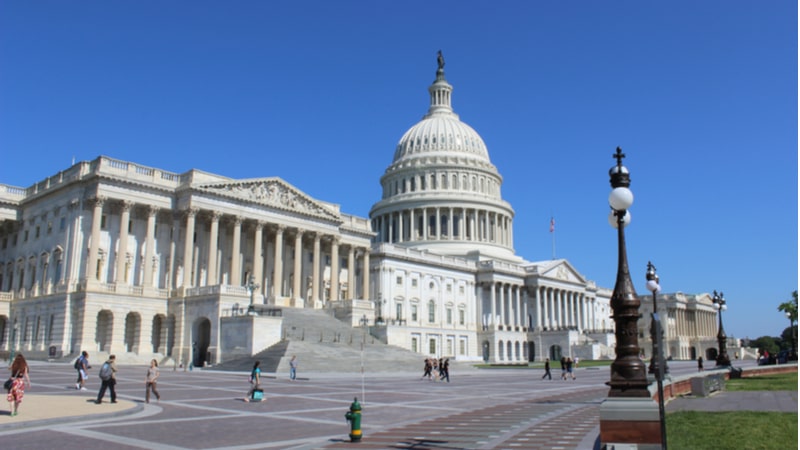
A proposed $9 billion funding increase for the Technology Modernization Fund (TMF) has been dropped from President Biden’s $1.9 trillion COVID-19 relief plan as Congress works to enact the plan through the budget reconciliation process, according to a knowledgeable source in Congress.
The proposal for the vast increase in funding for TMF – which exists to provide capital for Federal agencies to undertake IT modernization projects – was unveiled last month by then President-elect Biden as a call on Congress to “launch the most ambitious effort ever to modernize and secure Federal IT and networks.”
In addition to the giant funding increase – TMF has received just $25 million in each of the past three fiscal years – the Biden proposal also hinted at changing TMF repayment rules to make the funding source more appealing to Federal agencies. That part of the plan quickly drew support from range of powerful tech-sector trade groups that argued government’s reliance on outdated technology greatly hampers delivery of vital services to citizens.
According to a knowledgeable source in Congress, the TMF proposal was dropped from consideration in the $1.9 trillion relief bill due to opposition in the Senate. The source added, however, that there are also discussions ongoing about increasing TMF funding in future relief measures.
What remains unclear at this time, the congressional source said, is the fate of another $1.2 billion of Federal IT and cybersecurity-related funding contained in the Biden plan. Those proposals include:
- $690 million for the Cybersecurity and Infrastructure Agency (CISA) to secure civilian Federal networks and “support the piloting of new shared security and cloud computing services”;
- $300 million of “no-year” funding for the Technology and Transformation Services (TTS) unit within the General Services Administration (GSA) to “drive secure IT projects forward without the need of reimbursement from agencies”; and
- $200 million for the IT Oversight and Reform (ITOR) Fund targeted at the Federal CISO and the U.S. Digital Service to allow for the “rapid hiring” of hundreds of IT experts.
The congressional source said that those items remain in flux because House committees have yet to mark up specific legislative language that would implement the $1.9 trillion relief legislation.
Reactions of Dismay, Hope
The initial reaction in the Federal tech community reflected dismay over the development, along with some hope that more IT modernization funding might emerge down the road.
“The news is disappointing, but not surprising,” MeriTalk Founder Steve O’Keeffe commented.
“The Hill needs to understand the connection between technology failures and failing outcomes for American citizens,” he said. “The SolarWinds crisis and the pandemic couldn’t send a clearer message: We need a real change in our tech funding and management model to create better outcomes.”
“It is a huge mistake on the part of the Senate to eliminate funding for the TMF – you need to look no further than today’s multiple crises (Pandemic, Economy, Cybersecurity) to understand the need for modernization of government systems to provide the needed services for citizens,” Tony Scott, who was Federal CIO from 2015 to 2017 and is now CEO at Tony Scott Group, said. “This is shortsighted, and serves no legitimate interest whatsoever,” he added.
“It’s beyond disappointing to see funding for the TMF and related cyber priorities removed from the $1.9 billion American Rescue Plan,” Mike Hettinger, president and founding principal at Hettinger Strategy Group, said.
“While we all recognized that getting that level of funding was going to be an uphill climb, to get nothing, despite clearly identified IT and cyber needs coming as a result of the work-from-home requirements of the COVID pandemic, really stings,” he said.
“Going forward, Congress needs to focus its attention on the IT modernization and cybersecurity needs of individual agencies and ensure funding is provided to meet mission demands,” Hettinger said. “The longer these needs go unmet, the more vulnerable the federal government’s IT systems become.”
“It is always an uphill climb in any of these large spending bills to convince legislators and policymakers that IT infrastructure and technology capabilities are fundamental to their big picture policy goals,” Matthew Cornelius, executive director of the Alliance for Digital Innovation (ADI), commented.
“I commend the Biden administration for including those large numbers for the TMF, and for GSA and ITOR, in the American Rescue Plan because there cannot be a successful rescue or recovery from COVID, or SolarWinds, or the economic calamities we currently face, without the government being as effective, efficient, and functional from a technology and cybersecurity standpoint as possible,” he said.
“While this is a temporary setback in the confines of this bill, I would expect that many senators and members of the House are going to want to find a way to ensure that this kind of necessary and important and practical investment is made, somehow, over the course of this next year,” Cornelius continued. “Whether that is another reconciliation package, or whether it’s an emergency supplemental that tackles other pressing circumstances, this money is not going away, because this administration has made a commitment that the scale of the problem deserves a commensurate response.”
“We at ADI will continue to educate lawmakers, staff, and principals in the administration on why more funding for the TMF – and IT modernization more broadly if they want to unbundle the money and put it into various offices rather than a centralized fund – is a critical investment for the future of Federal operations, the Build Back Better agenda, and America’s national security,” Cornelius said.
